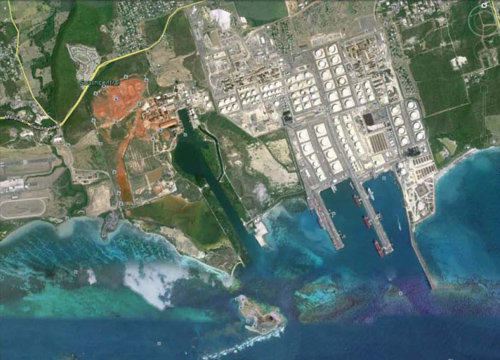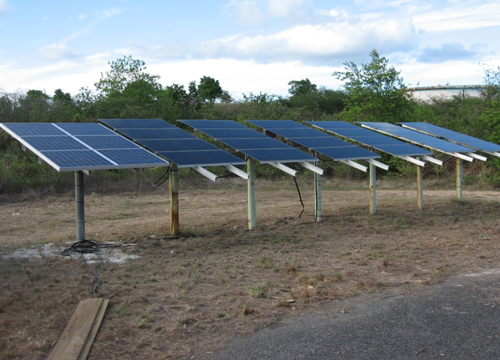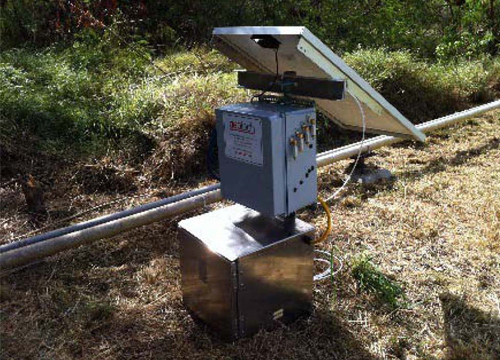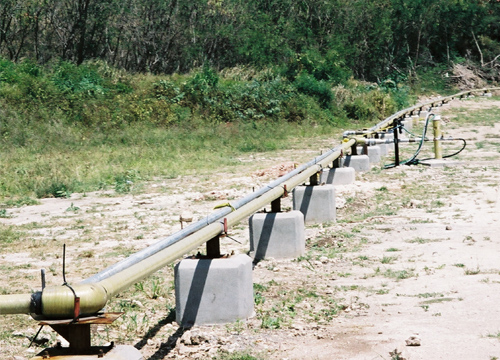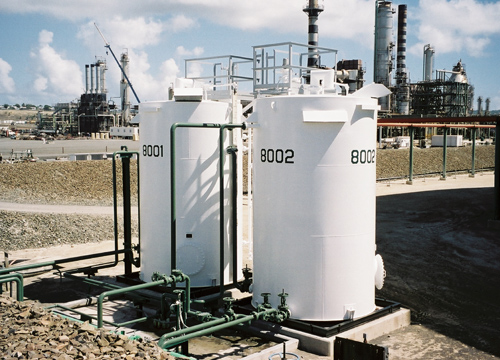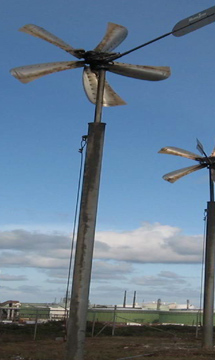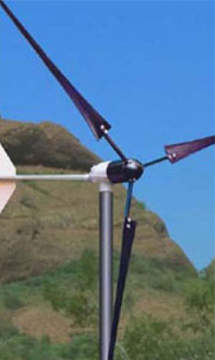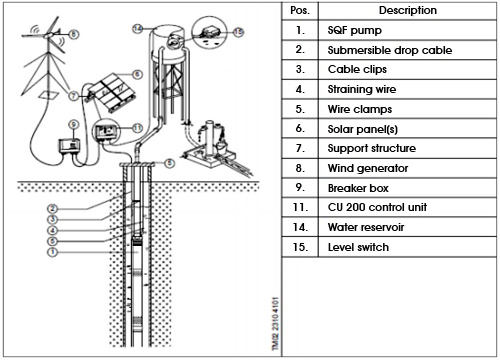Former St. Croix Alumina Plant
Kingshill, St. Croix, U.S. Virgin Islands
RCRA Corrective Action
Kingshill, St. Croix, U.S. Virgin Islands
RCRA Corrective Action
IMAGE GALLERY
Click on images
below for details
Click on images
below for details
Cleanup Objectives: Remove hydrocarbons from groundwater underlying a former alumina plant located in St. Croix's south shore industrial area. From 1978 to 1991, an estimated 900,000 to over 2 million gallons of petroleum were released from storage tanks and underground piping at the St. Croix Alumina facility and adjacent former Hovensa petroleum refinery.
Green Remediation Strategy: The strategy focuses on best management practices involving:
- Installing onsite, off-grid renewable energy systems to power equipment used for extraction and transfer of commingled oil and groundwater. Between 2002 and late 2011, four wind-driven electric generators (turbines), four wind-driven turbine compressors and photovoltaic (PV) arrays were installed incrementally. Since late 2011, all of the remediation electricity requirements have been met by PV arrays used to power four submersible pumps for total fluids recovery and six solar-powered skimming pumps that predominantly recover hydrocarbons.
- Designing the fluid extraction/transfer process to operate through an on-demand, direct-drive power system rather than on a continuous pumping basis.
- Processing the recovered petroleum product for beneficial use. The recovered groundwater and petroleum mixture is transferred via a pipeline to the adjacent petroleum facility where the petroleum is reclaimed.
Results:
Renewable Energy Use and Air Quality Protection
- Meeting the typical electricity demand of the submersible pumps used for fluid extraction through use of onsite solar power. Operation of each pump is estimated to demand 150-260 watts of electricity, depending on fluid levels and the column of fluids being raised by the pump.
- Using solar powered skimming pumps in six wells to recover hydrocarbons through floating intake filters.
- Reducing emission of greenhouse gasses such as carbon dioxide, as well as other pollutants such as sulfur oxides and nitrogen oxides, through avoided consumption of grid electricity generated by a fossil fuel-fired plant.
- Reducing air emissions associated with transporting recovered petroleum to a more distant facility rather than to the adjacent facility for onsite use or recycling.
- Balanced the project's changing power demand and budget by installing renewable energy components incrementally over a period of years.
Material Use & Waste Reduction
- Recovered approximately 493,000 gallons of free-product oil (approximately 40% of the estimated volume) from approximately 70 million gallons of extracted groundwater as of June 30, 2016.
- Reducing the volume of petroleum waste generated onsite that would otherwise be transported to a hazardous waste treatment or disposal facility where the recovered oil fraction would typically be incinerated as waste.
- Avoided use of construction materials and other resources needed to connect the fluid recovery system to the existing power grid, which was estimated to cost $100,000.
- Planning for future re-use of modular equipment, such as the PV panels, elsewhere after it no longer is needed for this fluid extraction/transfer application.
Property End Use: Industrial operations
Point of Contact: Caroline Kwan, U.S. Environmental Protection Agency Region 2
Update: September 2016





